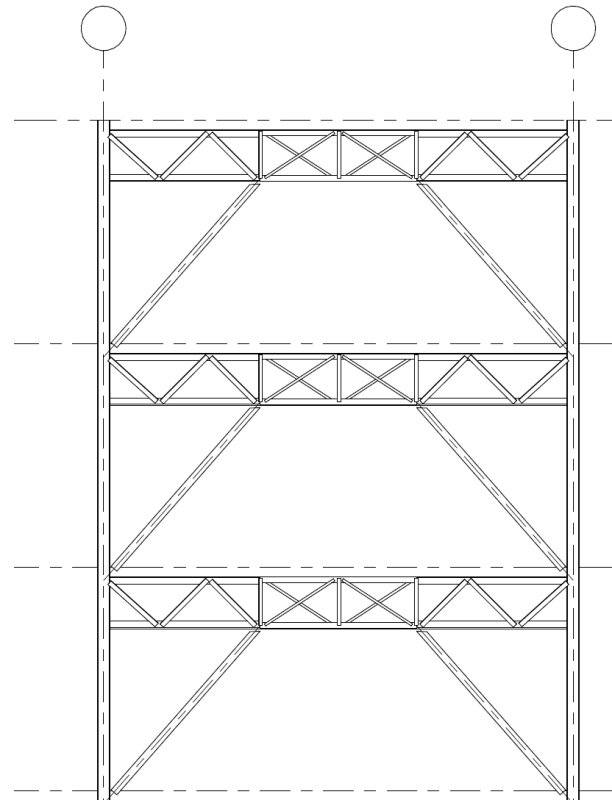The company I work at sometimes acts as the specialty engineer for jobs using Special Truss Moment Frame lateral systems. We just recieved push back on a job because we proposed bracing our STMF to reduce column sizes (See below image). The EOR said that it wasn't codified and there's been no testing on it. Testing has only been done on non-braced STMF.
According to the senior engineer I work with, while there's been no testing on the braces, their only purpose is to keep the inelastic behavior in the special segment zone (the double x's), and so testing is not needed. Bascially we can do whatever we want to keep it elastic outside of the special segment.
The company has already done several other jobs with braced STMF without pushback, and most likely will continue to do so on future projects.
I'm a recent college grad and still learning a lot, but there's only 2 other engineers here besides me. I'd like to hear other professional engineers input. Should this not be practiced until testing is done on this exact set up, or are the current codes and testing we already have sufficient to allow for the braced STMF design?

According to the senior engineer I work with, while there's been no testing on the braces, their only purpose is to keep the inelastic behavior in the special segment zone (the double x's), and so testing is not needed. Bascially we can do whatever we want to keep it elastic outside of the special segment.
The company has already done several other jobs with braced STMF without pushback, and most likely will continue to do so on future projects.
I'm a recent college grad and still learning a lot, but there's only 2 other engineers here besides me. I'd like to hear other professional engineers input. Should this not be practiced until testing is done on this exact set up, or are the current codes and testing we already have sufficient to allow for the braced STMF design?

